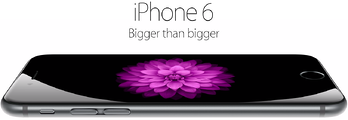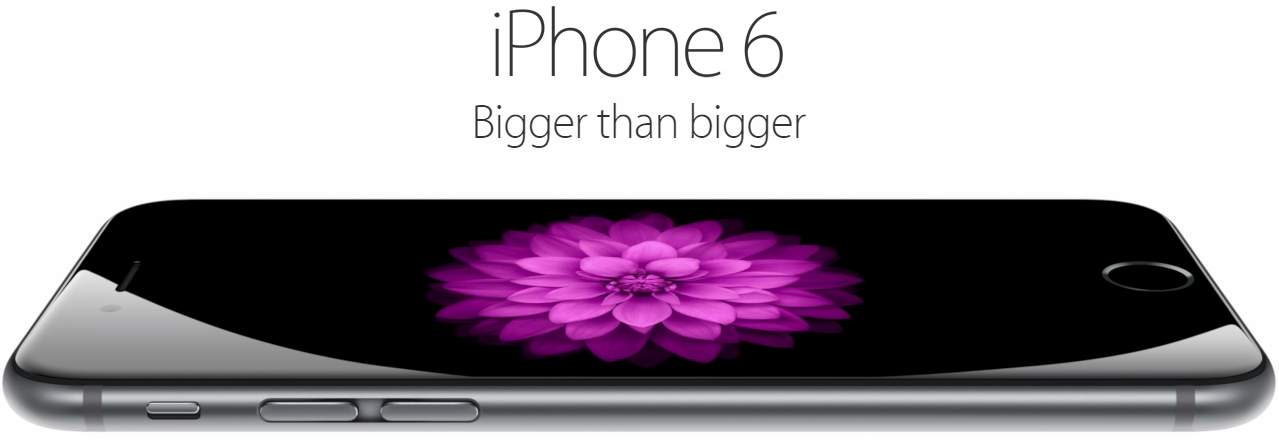iPhone 6, Apple Watch, and the Future of Mobile Advertising
With the latest in Apple tech (the iPhone 6 and iPhone 6 Plus) becoming available for purchase in stores today and seeing the craze that surrounds its launches, it’s inevitable to think about the future of mobile. We won’t go into the debate of who’s pushing innovation in the mobile market, since every company is making use of current technological advancements to create ever more sophisticated devices. But its especially undeniable that Apple stirs up quite a frenzy with any new announcement and release. So what exactly do these new iPhones and the recently unveiled Apple Watch mean for the future of mobile advertising?
It’s almost hard to remember that in the not too distant past smartphones didn’t exist and the concept of “wearables” was still entirely science fiction. Now we have gadgets like Google Glass and even entire lines of smartwatches. Smartphone screen sizes have nearly doubled over the last seven years. When Apple launched the iPhone in 2007, the average smartphone screen was 2.59 inches, which made Apple’s heralded revolutionary signature device seemed extraordinary with a 3.5-inch display. Now in 2014, the average smartphone screen size is 4.86 inches. It seems that Apple is playing catch-up by growing past the 4-inch screen its produced for its phones since the launch of the iPhone 5 in late 2012.
Many things have contributed to the natural progression of mobile display sizes increasing. Technology has improved to allow huge, high-resolution screens to use less battery life, while batteries have also slimmed down and powered up. Smartphones were first introduced as a combination of a cell phone, a music player, and a rudimentary browser. They’ve now grown into something else entirely providing us with constant entertainment, connectivity, and various utilities. Our seemingly innate human desire for being untethered has ensured our need is met with the production of useful and increasingly more powerful mobile devices.
The still young mobile marketing space has been determined up to this point by what technology could handle. With mobile hardware such as smartphones and tablets now relatively established, the time has come for advertising to explore the possibilities. However, there are still many challenges with marketing on mobile devices. The IAB has created standards among mobile ad types as the mobile rising star ad units and even documented the prevailing in-app ad formats, since traditional display ad units aren’t effective on mobile due to visual real estate and bandwidth restrictions. Responsive web design and dedicated apps are now necessary to maintain an effective online presence because users simply won’t tolerate trying to view something meant for a desktop on a 5-inch handheld.
There are also still many caveats to impactful location based targeting, but wearables may start to fill in the gaps by allowing even more precise specification and data gathering. Tracking across devices has always been a large concern for mobile advertising. However with the advent of iOS 8 and its interaction with the upcoming OS X Yosemite, and Google Chrome’s ability to sign in, these tracking issues are gradually dissipating. Privacy concerns are ever present, especially with potentially personally identifiable information from health tracking apps and data from wearables becoming more commonplace, but Apple and other manufacturers are working tirelessly to assure consumers of their security. Yet as more data is collected about users via mobile devices and their peripherals, marketers will continue to use it to enhance the impact of their advertising.
Although banner ads for smartwatches and Google Glass will hopefully not be something we see in the future, advertising will continue adapting to new mobile technology. It seems that content and social media marketing will continue to grow in conjuction with even more sophisticated targeting.
How do you think hardware has impacted the development of mobile advertising? What do you anticipate seeing in the future of mobile technology and advertising?





